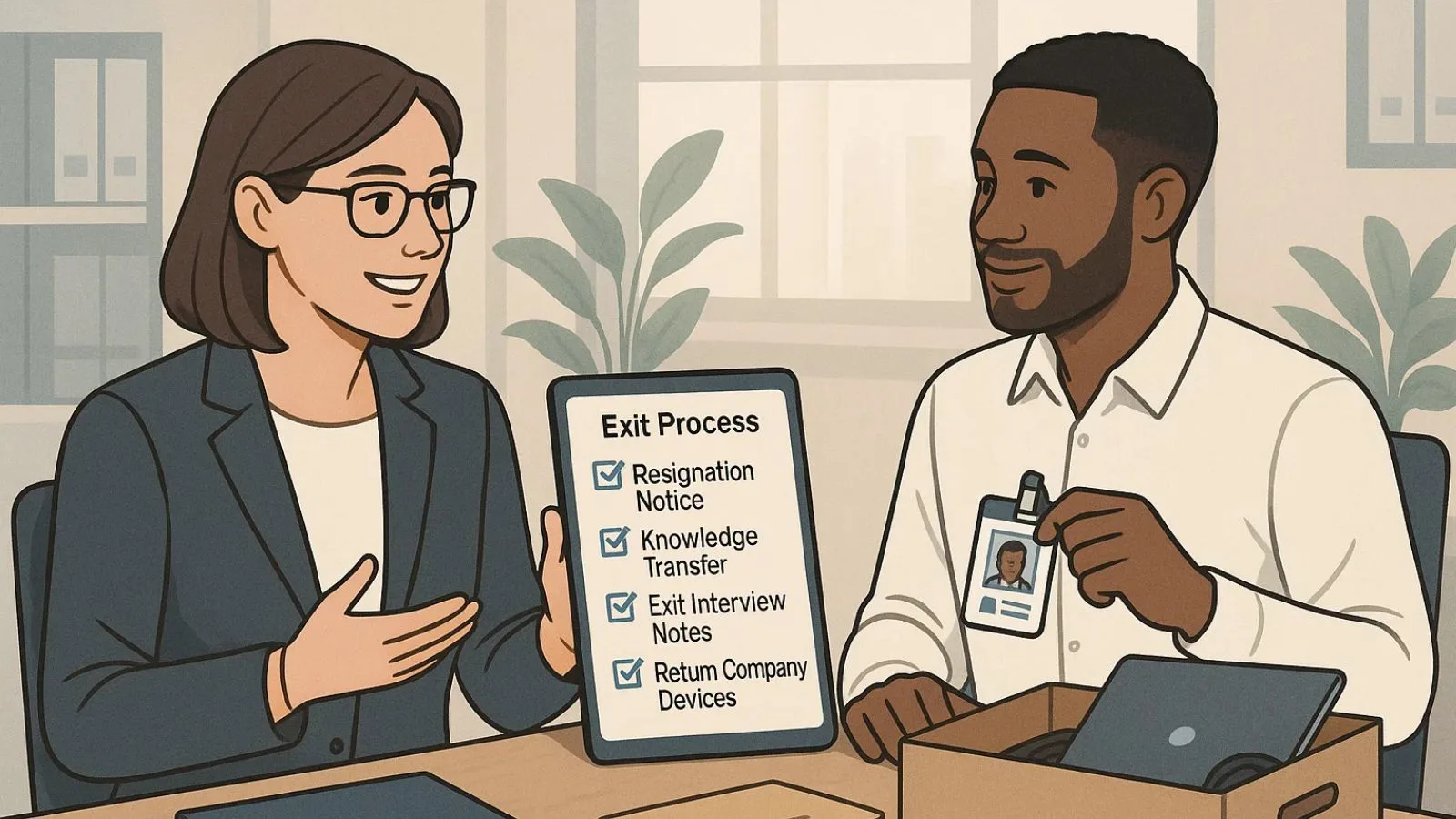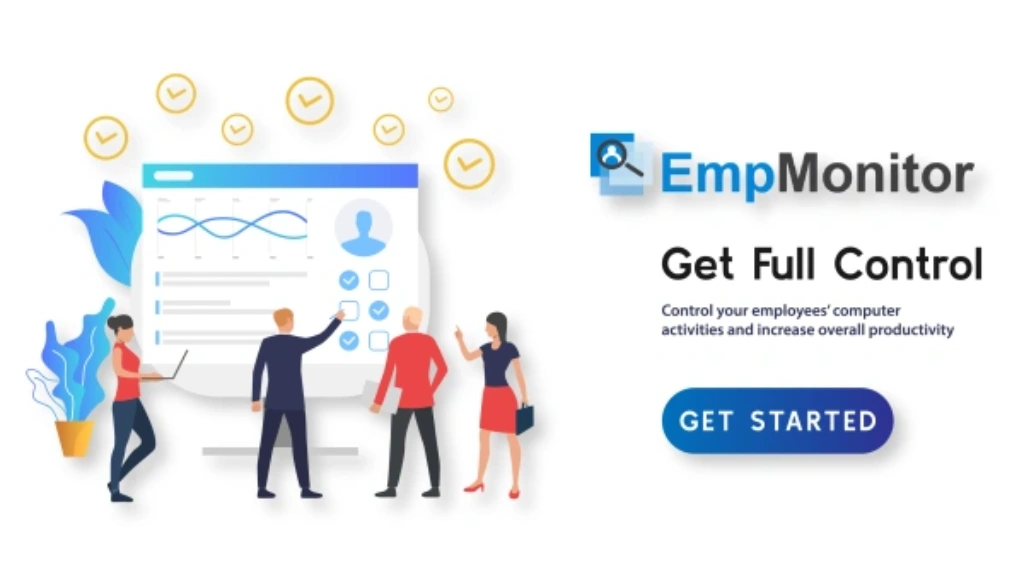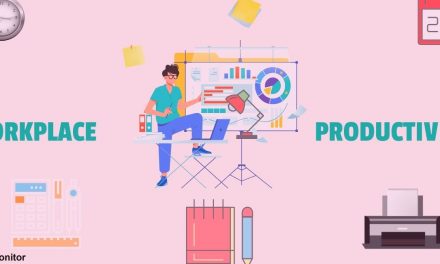Every organization eventually faces the moment when an employee decides to move on. Whether it’s a resignation, retirement, or even a termination, managing the employee exit process properly is just as important as onboarding.
A well-structured exit not only ensures compliance and smooth transitions but also preserves positive relationships with departing employees, something that can enhance your company’s reputation in the long run.
The employee exit process goes beyond collecting a resignation letter or conducting an exit interview.
It involves multiple steps, such as knowledge transfer, asset recovery, payroll settlement, and security clearance.
If handled poorly, this process can leave behind compliance risks, unfinished projects, or even a negative impression on the departing employee, who may later share their experience publicly.
On the other hand, an organized approach ensures professionalism, protects sensitive data, and fosters goodwill even after an employee leaves.
Mastering The Art Of Employee Offboarding helps organizations maintain integrity, ensure a smooth transition, and create lasting positive impressions that benefit both current and former employees.
In this guide, we’ll break down a complete employee exit process checklist, explore best practices, and share templates you can adapt for your own organization.
Listen Podcast Now!
What Is The Employee Exit Process?
The employee exit process refers to the structured set of steps an organization follows when an employee leaves the company.
It covers everything from the moment an employee submits their resignation or receives a termination notice to the completion of all formalities, ensuring both the organization and the departing employee part ways smoothly.
An effective exit process typically includes administrative, legal, and operational tasks.
Administrative tasks involve updating records, processing final paychecks, and ensuring benefits are settled.
Legal and compliance tasks may include nondisclosure agreements, return of company property, or compliance with labor laws. Operational tasks often focus on knowledge transfer, project handovers, and preparing the team for the transition.
It’s important to note that exit procedures can differ depending on whether the departure is voluntary or involuntary.
A voluntary exit, like resignation or retirement, may require different communication strategies compared to an involuntary exit, such as termination for performance or disciplinary reasons.
Regardless of the type, a smooth exit ensures organizational continuity and minimizes disruption.
Using an employee onboarding and offboarding checklist can simplify this process.
Such a checklist helps HR teams keep track of all necessary steps, from conducting exit interviews to retrieving company assets, making the process organized, efficient, and compliant.
By understanding the scope and purpose of the employee exit process, companies can build a framework that protects both the organization’s interests and the departing employee’s experience, ensuring a positive outcome for everyone involved.
Why An Effective Employee Exit Process Matters?
A smooth employee exit process isn’t just an HR formality; it plays a crucial role in protecting your organization and maintaining a positive work culture.
When employees leave, they take knowledge, skills, and experience with them.
If the exit isn’t properly managed, this can lead to gaps in projects, lost expertise, and disruption in team productivity.
One of the biggest benefits of an organized exit process is knowledge transfer.
When departing employees share their insights, document processes, and train their replacements, teams can continue operations without hiccups.
This also reduces the burden on remaining employees, who might otherwise struggle to fill sudden gaps. Compliance is another critical factor.
Companies must ensure all legal obligations are met, including final settlements, benefits, and any contractual agreements.
Mishandling this can lead to disputes, legal penalties, or damage to your employer’s reputation. An effective exit process also safeguards sensitive company data.
From revoking system access to retrieving company devices, each step ensures that confidential information stays secure.
Furthermore, a respectful, well-managed exit leaves a positive impression on employees, turning them into brand advocates or potential future collaborators.
Finally, managing exits professionally strengthens overall employee experience.
When employees see that departures are handled fairly and systematically, it builds trust within the organization and enhances your company’s image in the wider market.
In short, a structured employee exit process isn’t just about checking boxes; it’s about continuity, compliance, and culture.
Investing time and effort into it pays off in smoother transitions and a stronger, more resilient organization.
Stages of the Employee Exit Process:
Understanding the stages of a well-structured employee exit process can help organizations handle departures efficiently while minimizing disruption.
Each stage plays a specific role in ensuring a smooth transition for both the employee and the company.
1. Resignation or Termination Notice:
The process begins when an employee submits their resignation or receives a termination notice.
Clear communication at this stage is essential. HR should acknowledge the notice, confirm timelines, and outline the next steps so everyone is on the same page.
2. Knowledge Transfer:
Before an employee leaves, it’s crucial to capture their knowledge and expertise.
This could include training a replacement, documenting processes, or handing over ongoing projects.
Proper knowledge transfer ensures business continuity and reduces the learning curve for successors.
3. Exit Interview:
An exit interview helps organizations gather feedback on the employee experience.
This stage provides insights into workplace culture, management practices, and areas for improvement.
It’s also an opportunity to address any unresolved issues and leave the employee with a positive impression.
4. Asset and Access Handover:
Recovering company property such as laptops, mobile devices, access cards, and documents is a critical stage.
At the same time, digital access, including email accounts, software permissions, and cloud storage, should be revoked to protect sensitive data.
5. Final Settlement and Documentation:
This stage covers payroll settlement, benefits closure, issuance of experience letters, and completion of any legal or contractual obligations.
Clear documentation protects both the employee and the organization in case of future queries.
6. Transition and Team Adjustment:
Finally, the team and manager must adjust to the change.
Reassigning responsibilities, onboarding a replacement, and ensuring project continuity are key.
This stage ensures that the departure doesn’t negatively impact team performance or morale.
By following these stages, companies can handle employee exits systematically, leaving departing employees satisfied and the organization secure. Proper planning at each stage reduces risks and strengthens overall HR management.
Employee Exit Process Checklist:
A detailed employee exit process checklist ensures that no step is overlooked, making the offboarding experience smooth for both the employee and the organization.
By following a structured checklist, HR teams can manage exits efficiently, reduce risks, and maintain compliance.
Here’s a comprehensive employee departure checklist to guide your offboarding:
1. Administrative Tasks:
- Receive resignation or termination notice and acknowledge it formally.
- Update employee records and HR databases.
- Schedule an exit interview to capture feedback.
- Prepare final pay, bonuses, and benefits settlements.
2. Knowledge Transfer:
- Identify key responsibilities and projects the employee is handling.
- Arrange handover sessions with colleagues or successors.
- Ensure proper documentation of processes, passwords, and ongoing tasks.
3. IT and Security Clearance:
- Revoke access to company systems, email, cloud storage, and software accounts.
- Collect company devices, ID cards, keys, and access tokens.
- Remove the employee from internal communication channels.
4. Legal and Compliance Tasks:
- Ensure all legal agreements, such as non-disclosure or non-compete clauses, are acknowledged.
- Prepare any required termination or experience letters.
- Verify compliance with labor laws and company policies.
5. Exit Interview:
- Conduct a structured exit interview to gather feedback on workplace experience.
- Identify areas of improvement to enhance retention and employee satisfaction.
6. Transition and Team Adjustment:
- Reassign responsibilities to ensure continuity of operations.
- Notify clients or stakeholders if required.
- Update team members on workflow changes.
Using an employee onboarding and offboarding checklist makes this process easier, especially for larger teams or remote employees.
A pre-prepared checklist reduces the chances of missing critical steps and ensures a professional, respectful, and organized exit.
Remember, the goal of this checklist isn’t just to “check boxes,” it’s to create a structured, positive experience that benefits both the departing employee and your organization.
A well-managed employee exit process leaves a lasting impression and strengthens your company’s reputation as an employer of choice.
Best Practices for a Smooth Employee Exit Process:
A well-managed employee exit process isn’t just about completing paperwork;
It’s about ensuring professionalism, protecting sensitive information, and leaving a positive impression on the departing employee.
Following best practices can make offboarding efficient, consistent, and respectful.
1. Clear Communication:
From the moment an employee submits their resignation or receives a termination notice, communication is key.
Clearly outline timelines, expectations, and next steps. This transparency reduces confusion and ensures both HR and the employee are aligned.
2. Use a Structured Checklist:
Implementing a detailed offboarding checklist template ensures every task, from IT access revocation to knowledge transfer, is completed on time.
A structured checklist minimizes errors and guarantees compliance with company policies and legal requirements.
3. Conduct Exit Interviews:
Exit interviews provide valuable feedback about workplace culture, management practices, and potential areas for improvement.
Encouraging open, honest discussions can help organizations improve retention strategies and employee satisfaction.
4. Prioritize Data Security:
During the notice period, make sure company devices are returned and digital access is revoked.
Monitoring system activity and ensuring data protection prevents accidental or intentional leaks, safeguarding the organization’s information.
5. Knowledge Transfer and Transition Planning:
Ensure the departing employee properly documents their responsibilities, trains successors, and hands over ongoing projects.
A smooth knowledge transfer avoids disruption and helps the team maintain productivity.
6. Respect and Professionalism:
Treat employees leaving the organization with respect and empathy.
A positive exit experience enhances employer branding and can turn former employees into advocates or future collaborators.
By following these best practices, organizations can make the employee exit process more effective, reduce risks, and maintain a strong relationship with departing employees.
Using tools like an offboarding checklist template helps standardize the process, ensuring no step is missed while keeping things professional and organized.
Also Read:
The Art Of Employee Offboarding: 6 Best Practices For Smooth Exits
What Is Loud Quitting? Causes And Proven Solutions
How EmpMonitor Simplifies the Employee Exit Process?
Managing an employee exit process can be complex, especially for larger teams or remote employees.
This is where digital tools like EmpMonitor come in, making offboarding organized, efficient, and secure.
- EmpMonitor helps HR and management teams track employee activity, monitor workflow, and ensure all exit procedures are completed on time.
- For instance, during the notice period, HR can use EmpMonitor to confirm that sensitive files are handled appropriately, digital access is managed, and company devices are returned. This reduces the risk of data loss or accidental leaks. Another key benefit is streamlined knowledge transfer.
- EmpMonitor allows supervisors to track project completion, review work logs, and ensure all critical information is documented before an employee leaves. This simplifies the transition and ensures continuity for the team.
- Payroll and compliance are also made easier. With accurate activity tracking and reporting, HR teams can verify hours, confirm task completion, and ensure all legal obligations, such as final settlements and agreements, are met without delay.
EmpMonitor doesn’t just focus on security; it also enhances employee experience.
By providing a clear, transparent offboarding process, employees feel respected and confident that their departure is handled professionally.
For organizations looking to standardize their employee exit process, tools like EmpMonitor are invaluable.
They combine productivity tracking, security management, and workflow oversight in one platform, allowing HR teams to focus on people rather than paperwork.
Investing in EmpMonitor ensures that your offboarding process is not only compliant and secure but also smooth, professional, and efficient, benefiting both the organization and the departing employee.
Conclusion:
A structured employee exit process is more than just a formality; it’s an essential part of maintaining a professional, compliant, and employee-friendly organization.
From knowledge transfer and asset recovery to final settlements and exit interviews, each step ensures a smooth transition for both the employee and the company.
Using tools like an offboarding checklist template or digital platforms such as EmpMonitor can make this process more efficient, organized, and secure.
These tools help track tasks, protect sensitive data, and streamline communication, reducing errors and stress for HR teams.
Ultimately, a well-managed exit leaves a positive impression on departing employees, turning them into advocates and potential future collaborators.
By investing in a thoughtful employee exit process, organizations protect their interests, maintain continuity, and strengthen their reputation as an employer that values people, even when they move on.
Remember: a professional exit today can create goodwill and opportunities for tomorrow.
FAQ’s:
Q1. What is an employee exit process?
It’s a structured procedure covering everything from resignation or termination notice to final settlements, including knowledge transfer, asset return, and compliance.
Q2. How long does an exit process usually take?
Depending on the role and responsibilities, it can take a few days to several weeks, especially for senior positions.
Q3. How do you create an employee departure checklist?
List all administrative, operational, and legal tasks, and track them using an employee departure checklist to ensure nothing is missed.
Q4. Why is an offboarding checklist template important?
It ensures consistency, efficiency, and compliance, making the offboarding process smooth and professional.
Q5. Can tools simplify the exit process?
Yes, platforms like EmpMonitor help manage tasks, track activity, secure data, and streamline workflow for a seamless exit.
















